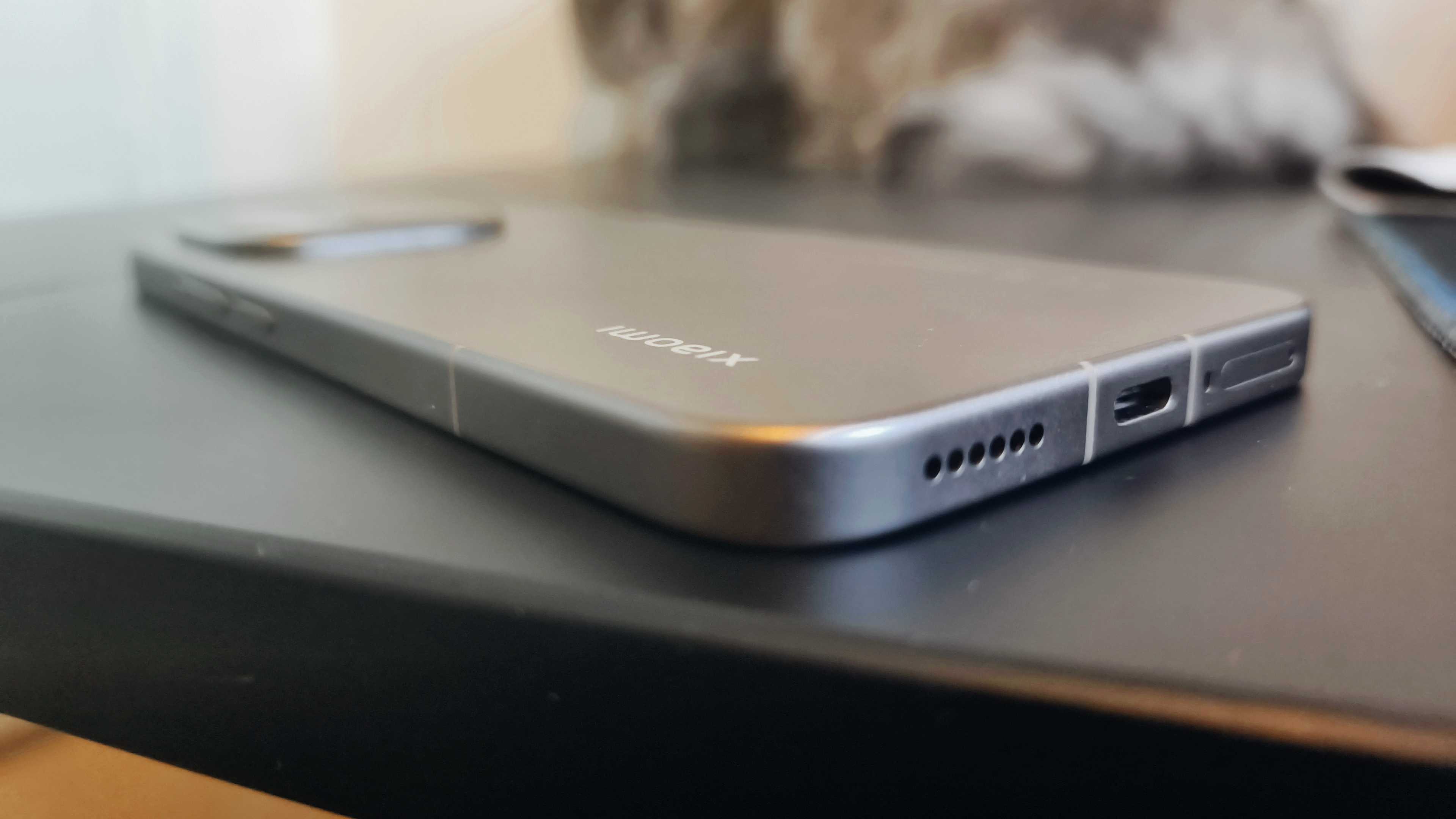Our Verdict
Many smartphone photographers have been catching on to Xiaomi's appeal, with its Leica camera pummelling the competition for the last couple of years. The Xiaomi 15T Pro offers the best opportunity yet for everyone else to get the greatest phone camera on the market for less than flagship price, and with classy handset design, great performance, big screen and good battery life, it's a mighty appealing one indeed.
For
- Leica camera sensor still wows
- Great power for a sub-£700 phone
- Improved battery life
Against
- Screen is too big for smaller hands
- No/little US availability
Why you can trust Creative Bloq
The Xiaomi 15T Pro follows on the heels of the simply sensational Xiaomi 15, offering a bigger screen wrapped around the Leica-engineered camera, packaged in a slightly more understated but undeniably classy package than the dazzling wavy spaceship silver of the top-level model.
The 15 made it onto our highly exclusive list of the best camera phones around, as the most powerful model on the market (when it came out). Will the 15T Pro demand the same attention? I got it in for testing to find out.

Xiaomi 15T Pro: Key specifications
Chipset: | MediaTek Dimensity 9400+ |
Memory: | 12GB RAM |
OS: | Xiaomi HyperOS 2 (Android 15) |
Screen: | 6.83in |
Resolution: | 2772 x 1280 (447ppi) |
Refresh rate: | 144Hz |
Storage: | 256GB/512GB/1TB |
Rear cameras: | 50MP 23mm Leica Summilux main camera, 50MP 115mm super telephoto, 12MP 15mm ultra-wide, up to 8K video capture |
Front camera: | 32MP in-display selfie camera |
Connectivity: | Wi-Fi 7, Bluetooth 6.0, NFC, Infrared, USB-C |
Battery: | 5500mAh |
Dimensions: | 162.7 x 77.9 x 7.96mm |
Weight: | 210g |
Design and screen

Xiaomi has repeatedly stated its aim to become the world's biggest tech company, and to do so, it has to take on giants like Samsung and Apple, and win. You don't achieve that with dull-looking products, and the clever cogs at Xiaomi clearly know that. While the 15's dazzling, wavy silver casing is absent from the 15T Pro, the design ambition at work here is still obvious.
The fibreglass back melds naturally into the metal frame, with a sleek but finely textured feel when holding the handset. Three colour options are available, black, grey, and the most fetching one, 'Mocha Gold', which I was thrilled to discover was the colour of my test unit.
The camera notch is near-identical to the 15, with an added gradient to the edges and slightly adjusted corners to match the corner angles of the outer frame. The USB-C port underneath is centred exactly (take note, iPhone Air), and the side buttons are firm but responsive.
Build design and quality, in short, is impeccable, and as my clumsy hands can attest, so is the build strength and shock absorbency. I've dropped the phone, sans protective case, at least a dozen times during my time with it, and there's still not a single scratch on the case or screen.
Using metal and fibreglass for the chassis means that, combined with the increased size (a healthy 6.83-inch screen), it weighs a little more than some competitors, at 210 grams, or about 20 grams more than your average flagship phone.
Daily design news, reviews, how-tos and more, as picked by the editors.
The size, while offering more screen real estate (and the AMOLED screen that sports incredible 447 PPI display density definitely deserves that), will make it a challenge to comfortably fit smaller hands and tight pockets. It's only slightly smaller than the iPhone 17 Pro Max, giving you an indication as to its considerable size and heft.
Features and performance

One immediate reason for the Xiaomi 15T Pro being £200 cheaper than the 15 is the choice of processor. Instead of the industry-leading (and blazing-fast) Snapdragon 8 Elite chipset in the flagship, the 15T Pro sports a more economical MediaTek Dimensity 9400+ CPU.
Still, the 15T Pro is no slouch, offering 12GB of high-bandwidth LPDDR5X RAM just like the OG 15, and a capable GPU as well, with the refresh rate on the 15T Pro actually outdoing the parent model, at up to 144Hz (making it an excellent gaming phone).
This is borne out in benchmark test results as well, showing how the cut-price Xiaomi handily outdoes the Samsung Galaxy S24 Ultra and the Google Pixel 9 Pro on CPU and GPU fronts alike, and in fact beating even the daddy 15 in GPU testing. Looks like that Immortalis GPU packs a bit of a punch.
PCMark for Android's Work 3.0 test puts the 15T Pro slightly ahead of the Pixel but a little behind the Samsung and the top Xiaomi. In battery-life terms, it slugs it out with the best of them, thanks to its 5500mAh brick on board and some clever efficiency work by the processor in the background.
| Header Cell - Column 0 | Header Cell - Column 1 | Xiaomi 15T Pro | Xiaomi 15 | Samsung Galaxy S24 Ultra | Google Pixel 9 Pro |
|---|---|---|---|---|---|
GEEKBENCH 6 | CPU Single-core: | 2513 | 3052 | 2130 | 1885 |
| Row 1 - Cell 0 | CPU Multi-core: | 7470 | 9320 | 6660 | 4387 |
| Row 2 - Cell 0 | GPU OpenCL: | 20,071 | 18,410 | 14.141 | 6903 |
PC MARK FOR ANDROID | Work 3.0: | 15,856 | 18,480 | 18,045 | 13,239 |
| Row 4 - Cell 0 | Battery life: | 15h 52m to 20% | 16h 24m to 20% | 15h 44m to 20% | 14h 19m to 20% |
| Row 5 - Cell 0 | Storage 2.0: | 111,318 | 170,028 | 32,460 | 33,415 |
| Row 6 - Cell 0 | Row 6 - Cell 1 | Row 6 - Cell 2 | Row 6 - Cell 3 | Row 6 - Cell 4 | Row 6 - Cell 5 |
Xiaomi continues delivering excellent sound quality from a phone in the 15T Pro, with clear, voluminous sound that's not too tinny and stays remarkably free from distortion as I cranked up the volume.
Of course, I prefer connecting the phone to speakers around the house, or my headphones, and the Bluetooth 6.0 always worked without any pain on all my devices.
Stated max screen brightness is 3200 nits for up to a quarter of the screen area at a time, but maximum overall brightness is around 1420 nits, still up there with the better phones on the market.
AI

If a new tech product doesn't have AI, is it even real? In the Xiaomi 15T Pro's case, we get a suite of AI-powered productivity boosters, such as AI writing, translating and transcribing tools on board, along with some AI tools in the camera and video-editing suites.
One such tool is the AI Mode that, based on keywords, templates and prompts, edits together a short video from your selected clips and images, with rights-free music and a variety of transitions.
The results from using this feature are often quite impressive, although the option to manually edit 'post-assembly' would make it more of a consistently useful tool. There is also a generative AI Dynamic Wallpaper function that sometimes impresses and sometimes underwhelms, like most gen AI tools do
Camera








The camera is almost as good as the one on the Xiaomi 15. It has a 23mm sensor engineered by camera boffins Leica, only slightly smaller than the one-inch sensor on the mothership, and the real-life results of the 50MP lens bear that out, with excellent native results, whether shooting indoor portraits, snapshots with conflicting focal points or using the 5x, telephoto zoom in the 115mm, 50MP telephoto camera for vivid landscapes. Macro images also pop nicely, and the size and sensitivity of the sensor especially comes into its own at night, with even the lowest of low light offering little resistance to the Xiaomi's capturing abilities. Examples of most of these are apparent in the above carousel.
There is one small frustration to note, in that the lenses struggle a little to decide which one to deploy when shooting close-ups in any of the auto modes. The fully manual option eliminates that pain, but you'll have to know what you're doing (a tall order for many people I know and call friends).
Video capture is extremely impressive, with 8K possible, and 4K at up to 120 FPS making it a fully valid option for pro-level smartphone videography. I've used it for some of Creative Bloq's own videos, and will continue to do so until Xiaomi request the test unit back...
Price
At £699, the Xiaomi 15T Pro undercuts all flagship phones by at least £200, and is in fact a similar price to the Samsung Galaxy S24 Ultra, a previous-gen phone (and less powerful than the Xiaomi in almost every respect). This makes the 15T Pro an attractive prospect for those who want top (or near-top) performance for a bit less, especially if they're on the hunt for a nice, big screen. Of course, the OG Xiaomi 15 is available for £899 (and fits normal/small hands much better), and the latest iPhone is available for a similar price to that, if you've got an extra couple hundred to spare. There isn't a clear-cut reason to do that though, in my mind.
Buy it if
- You want a big screen
- You want a great camera phone
- You don't want to spend flagship money
Don't buy it if
- 6.83 inches is too much screen real estate for your hands/pockets
- The price may be too close too flagships and too high for midrange needs
out of 10
Many smartphone photographers have been catching on to Xiaomi's appeal, with its Leica camera pummelling the competition for the last couple of years. The Xiaomi 15T Pro offers the best opportunity yet for everyone else to get the greatest phone camera on the market for less than flagship price, and with classy handset design, great performance, big screen and good battery life, it's a mighty appealing one indeed.

Erlingur is the Tech Reviews Editor on Creative Bloq. Having worked on magazines devoted to Photoshop, films, history, and science for over 15 years, as well as working on Digital Camera World and Top Ten Reviews in more recent times, Erlingur has developed a passion for finding tech that helps people do their job, whatever it may be. He loves putting things to the test and seeing if they're all hyped up to be, to make sure people are getting what they're promised. Still can't get his wifi-only printer to connect to his computer.
You must confirm your public display name before commenting
Please logout and then login again, you will then be prompted to enter your display name.

